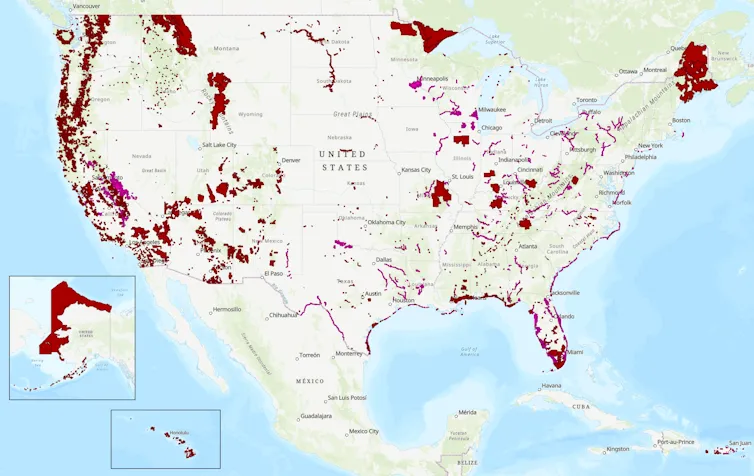
The Endangered Species Act Under Siege: A Threat to Biodiversity
The Endangered Species Act (ESA), established in 1973 to protect our planet's most vulnerable species, is facing unprecedented threats. New proposals from the Trump administration aim to redefine pivotal legal terms, potentially dismantling the protections that have been crucial in conserving numerous species across America. The implications of these changes are dire, particularly for our nation’s biodiversity and ecological balance.
The ESA has been instrumental in saving many species from the brink of extinction. It does so by not only preventing direct harm through killing but also by safeguarding their habitats — the ecosystems where these threatened beings thrive. Notably, critically endangered species like the Kemp's Ridley Sea Turtle and the California Condor have benefited immensely from the provisions laid out in this act. These protections have allowed various species to rebound from dwindling populations to a more stable footing, showcasing the success of conservation efforts driven by the ESA.
A golden-cheeked warbler, a species facing habitat loss due to urban expansion.
However, the proposed changes threaten to strip away the essential protections that have kept these ecosystems intact. For instance, the interpretation of the term “harm” is being contested. Traditionally, harm includes not only direct killing but also the destruction of habitats critical for survival. Removing this definition fundamentally weakens the act and endangers species that rely on specific environments for nurturing and reproduction.
Dr. Lyall Bellquist, a seasoned marine biologist, raises significant concerns regarding the potential consequences if these modifications are enacted. He warns that indirect impacts on species through habitat changes, such as pollution or deforestation, can be just as harmful as direct threats. With 81% of species listed as endangered due to habitat loss and degradation, the removal of protective measures could lead to catastrophic declines in populations.
Map showcasing critical habitats essential for endangered species protection.
Public sentiment is also on the side of conservation. Recent surveys indicate that a staggering 84% of Americans support the ESA, reinforcing the notion that biodiversity preservation is a priority for citizens across the nation. As voices of opposition against these regulatory changes grow louder, it becomes clear that the American public cares deeply about the fate of our natural world.
In conclusion, as we face potentially monumental shifts in how endangered species are protected, it is crucial to advocate for the preservation of the ESA in its current form. The ongoing debate serves as a reminder of the thin line between progress and destruction. How will these proposed regulations impact your local wildlife? Engage with us in the comments and share your thoughts on protecting endangered species.
Can you Like
In the arid expanse of Nevada, a small but crucial fish known as the Fish Lake Valley tui chub is on the brink of extinction, prompting wildlife officials to propose its listing as an endangered speci...
The recent actions of the Trump administration have once again ignited a heated debate regarding wildlife conservation in the United States. The administration is seeking to eliminate the protections ...
TOPEKA — The ongoing fight over the lesser prairie chicken, a bird that has long hovered between being threatened and endangered, has intensified under the Trump administration's push to remove its pr...